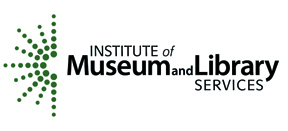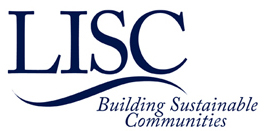 |
 |
FOR IMMEDIATE RELEASE
IMLS Press Contact:
Giuliana Bullard
202-653-4799, gbullard@imls.gov
LISC Press Contact:
Colleen Mulcahy
312-342-8244, c.mulcahy@sbcglobal.net
Museums and Libraries Step-Up Efforts to Tackle Economic Distress in Poor Communities, Says New Report from IMLS and LISC
Washington, DC— A new national report finds that many museums and libraries are leveraging their prominent local positions to help rebuild troubled neighborhoods, driving economic, educational and social efforts that help raise standards of living.
Museums, Libraries, and Comprehensive Initiatives: A First Look at Emerging Experience, is part of a collaborative research effort by the Institute of Museum and Library Services and the Local Initiatives Support Corporation (LISC) examining the ways that museums and libraries are helping fuel successful comprehensive community revitalization efforts and offer best practices for other institutions to follow.
The findings will be used to launch discussions at a series of invitational community meetings this fall and winter in Walterboro, S.C.; Indianapolis, Ind.; Minneapolis–St. Paul, Minn.; Philadelphia, Pa.; and Oakland, Calif.
The report includes examples from nine different museum and library initiatives, including:
-
The Children’s Museum of Indianapolis. The museum decided to expand into its existing neighborhood, the Mid-North neighborhood, rather than build new facilities downtown. After taking the lead on transportation enhancements and acquiring a brownfield site to create green space, the museum became a leader in a citywide development effort managed by LISC.
-
The Detroit Public Library. The Parkman Branch houses one of 10 learning labs in Detroit that connects adults who have limited literacy and math skills to career pathways. The branch participates in the Hope Village Initiative, a neighborhood network of nine institutions serving a 100-block area, by providing skills training programs, and it is part of a community referral program linking individuals to area agencies for assistance with healthcare, parenting, and tax preparation.
-
Colleton Museum & Farmers Market (Walterboro, S.C.). The museum expanded into an old remodeled grocery store at the edge of downtown and now administers a farmer’s market there. The new space doubles as a town hall and community center. By partnering with community organizations, the museum provides health education through cooking classes and the statewide Eat Smart, Move More program.
“Our nation’s libraries and museums have vast potential to develop the physical, social, and economic initiatives that are so necessary for comprehensive community revitalization efforts,” said IMLS Director Dr. Kathryn K. Matthew. “I’m proud that IMLS and LISC have collaborated to identify leading examples of this cross-sectoral work and that IMLS provides the funding to support this vital work.”
“Many libraries and museums have moved beyond their traditional roles and are now key partners helping long-distressed communities build stability and growth,” said Michael Rubinger, LISC president and CEO. “They are advocates, community planners and economic engines—recognizing the needs of residents and responding in ways that help drive lasting change.”
The full report (PDF) is available on the IMLS website and through LISC’s Institute for Comprehensive Community Development.
About the Institute of Museum and Library Services
The Institute of Museum and Library Services is the primary source of federal support for the nation’s 123,000 libraries and 35,000 museums. Our mission is to inspire libraries and museums to advance innovation, lifelong learning, and cultural and civic engagement. Our grant making, policy development, and research help libraries and museums deliver valuable services that make it possible for communities and individuals to thrive. To learn more, visit www.imls.gov and follow us on Facebook and Twitter.
About LISC
LISC equips struggling communities with the capital, program strategy, and know-how to become places where people can thrive. It combines corporate, government and philanthropic resources. Since 1980, LISC has invested $14.7 billion to build or rehab 330,000 affordable homes and apartments and develop 53 million square feet of retail, community and educational space. For more, visit www.lisc.org.